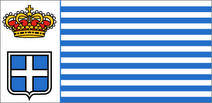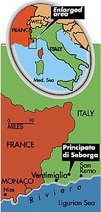 For the last day of school, June 11, the Emergency Service of Seborga-Vallebona, has organized, together with the Directorate of Teaching Bordighera and the Seborga’ School, an afternoon dedicated to teaching and educating the students on matters related to safety and emergency services, called: “IO MI SALVO COSI`” (translated: “I’ll be safe in this way”).
For the last day of school, June 11, the Emergency Service of Seborga-Vallebona, has organized, together with the Directorate of Teaching Bordighera and the Seborga’ School, an afternoon dedicated to teaching and educating the students on matters related to safety and emergency services, called: “IO MI SALVO COSI`” (translated: “I’ll be safe in this way”).The activities, aimed at primary school students, were intended to raise the awareness of safety issues at home, at school or the safe use of bicycles and motorcycles.
The students reflected on their relationship with the territory around them, with the environment and the need for its preservation as well as how to keep ourselves safe from accidents or natural disasters such as fires, flooding of rivers, floods or earthquakes.

The idea was to create an important ethics purpose: to raise awareness to safety by introducing fundamental values such as solidarity and the need to take care of others and to help them.
In a society that holds as values personal interest, success or appearing on television, the schools must educate for real values that promote minds open to the needs of others, recognizing the worth of the individual.
In this context, the Emergency Service is a good example of an organisation based on the support of voluntary individuals.
The volunteers of the Emergency Service, Alessandra Ghelfi, Massimo Paci, and the teacher Emanuela Rebaudengo, also a volunteer, have expressed their hope that the children themselves will promote to their families the awareness of safety issues through these activities learned at school.















